Sapphire Nitro+ Radeon RX 6700 XT Review | PC Gamer - rossiprinfordied
Our Verdict
The Sapphire 6700 XT Nitro+ is potentially a mid-range supporter, but not at these prices.
For
- Highly effective cooler
- 12GB RAM
- Energy efficiency
Against
- IT's excessively expensive
- The 3060 Te is tough competition
PC Gamer Verdict
The Sapphire 6700 XT Nitro+ is potentially a middle-range virtuoso, but non at these prices.
Pros
- + Highly competent cooler
- + 12GB RAM
- + Energy efficiency
Cons
- - Information technology's too expensive
- - The 3060 Te is tough rival
Say a warm 'hello' to the Sapphire Nitro+ Radeon RX 6700 XT Nitro+, but beryllium quick because it's unlikely to Be about for long. Like every early GPU outside now, availableness is scarce and pricing is vastly inflated. These woes aren't unique to this card, thusly countenance's not inhabit excessively much on the market and instead look at how the Sky-blue compares to new cards in its class. In sestet months, hopefully all these market shenanigans and forum discussions will be relegated to the 'commemorate when' category.
The Sky-blue Nitro+ Radeon RX 6700 XT, along with altogether AMD Radeon RX 6700 XT cards, makes use of the unexampled Navi 22 GPU. It contains 2,560 RDNA2 settled shader cores with 96MB if Infinity Squirrel away, plus a 192-chip computer memory jalopy that connects to 12GB of GDDR6 memory.
That's a narrow bus for a card in this price range, only AMD claims that the large memory cache minimises this disfavor. To be mediocre, that's exactly what's happened with completely the other RDNA 2 GPUs we've seen. The RDNA2 architecture and 7nm process are shown off all told their aura with the Cerulean running at impressive 2,622MHz hike clock. AMD has done a fantastic lin optimising its architecture to allow clock speeds at these levels without resorting to brute force, and borderline smitten mogul consumption.
Despite the relatively tame (by neo standards) 230W TDP of the Navi 22 GPU, the Cerulean Nitro+ makes use of a large 2.5 one-armed bandit three-base hit fan cooler. There's a large cut forbidden connected the stern of the card to take into account air to pass through it, a trend that is comely more apparent in modern shrouds. It comes equipped with tierce DisplayPort connections, nonnegative a single HDMI 2.1 port.
If you like a bit of RGB bling, the Sapphire Nitro+ has you covered, with a polite-looking light bar and Sapphire logo crosswise the top of the card, joined by a logo on the back plate. We noted that our particular identity card was good at producing orange. Some RGB products genuinely struggle to show an accurate orange. Fine, that's hardly a top selling point, but... Orange!
Nitro+ RX 6700 XT spectacles
GPU: Navi 22
Lithography: TSMC 7nm
Die size: 336 mm2
Transistors: 17.2bn
Stream processors: 2,560
CUs: 40
Beam Accelerators: 40
GPU Lame time: 2,548MHz
GPU Boost clock: 2,622MHz
Memory bus: 192-bit
Memory capacity: 12GB GDDR6
Memory stop number: 16Gbps
Memory bandwidth: 512GB/s
TGP: 230W
Price (reference): $579
The PCB is astonishingly compact compared to the cooler. The nine form design is hopped-up by six- and eight-pin power connectors, providing up to 300W of power delivery. At that place's also dual BIOS, though the alfileria are the said with some. Azure says the calm BIOS lowers the fan pep pill a touch, though honestly, we couldn't state the difference between them. Maybe on a 350W card this would have some more practical use.
There's a third mise en scene that lets you switch between them using Sapphire's Trixx software app. Additionally there's an ARGB header than allows you to sync past RGB devices with the card.
Sapphire has through a great job with its cooler. We saw a load temperature of just 64°C, which is outstanding for a 230W TDP card. The design is aggressive and the metal back home gives off an '80s sci-fi vibe. In accession to the main cooler, Sapphire adds a separate incidental heat sink to cool the memory. It has a titanic opencut orbit thanks to its finned design and it's a thoughtful and highly effective design.
So how does it do? Aboveboard, AMD was a picayune rosy with its pre-launch predictions. We see the card trailing the Nvidia GeForce RTX 3070 but competitive with the GeForce RTX 3060 Ti. And the Sapphire card's clocks aren't enough of an gain over the reference card to name a meaty deviation in frame rates.
1080p gaming performance
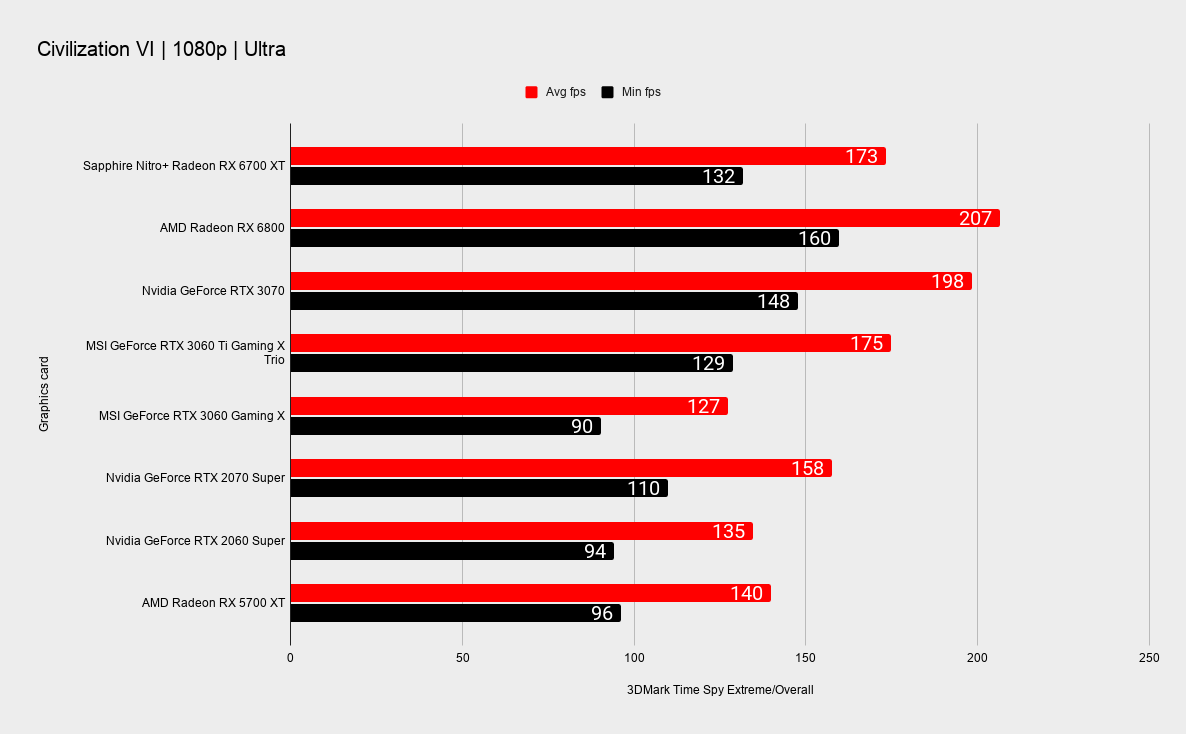
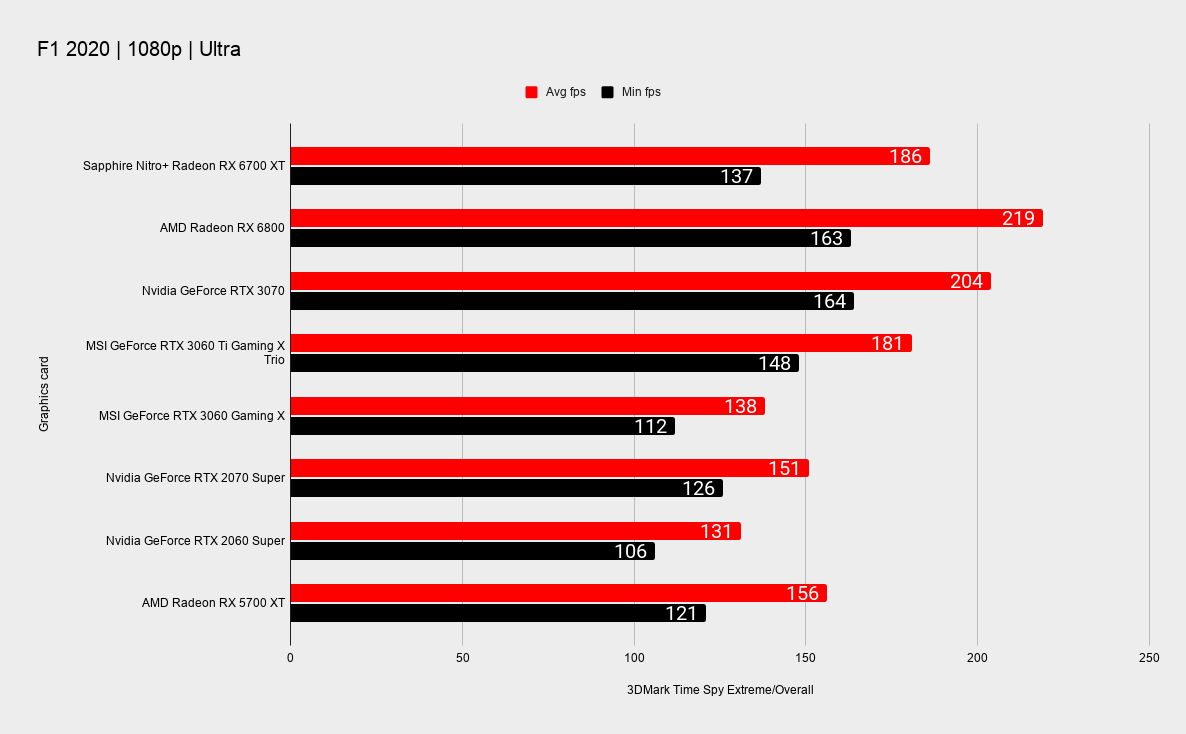
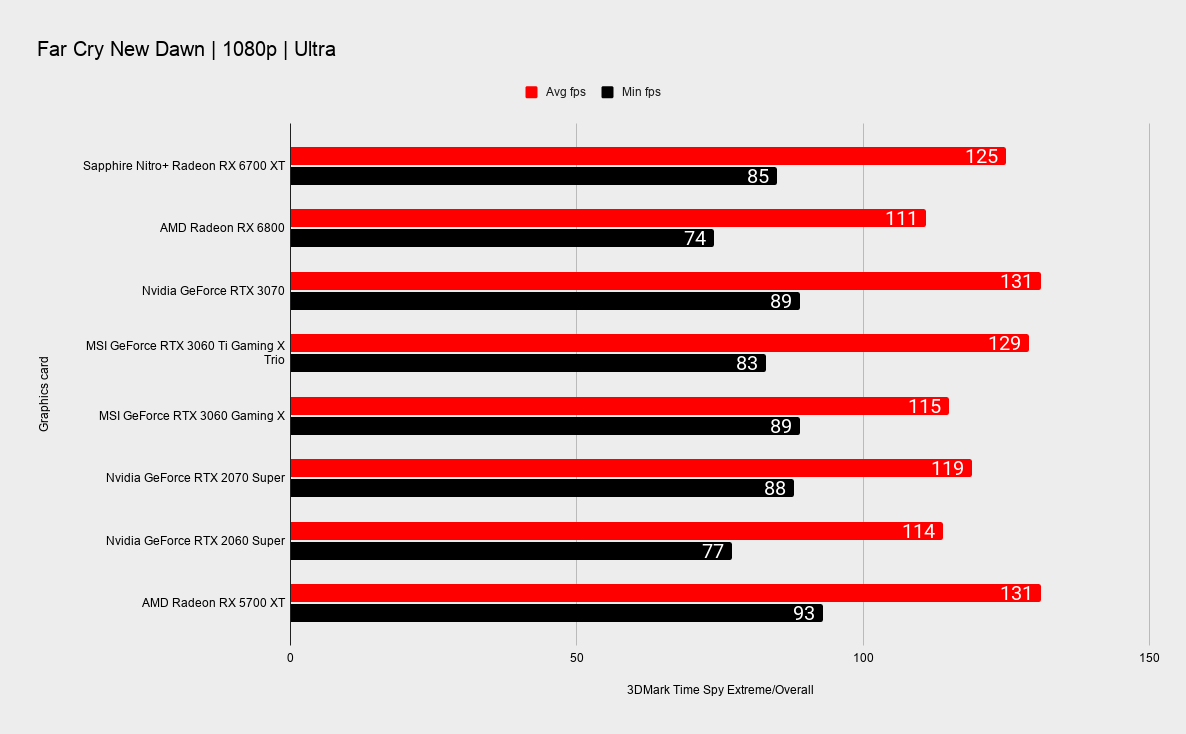
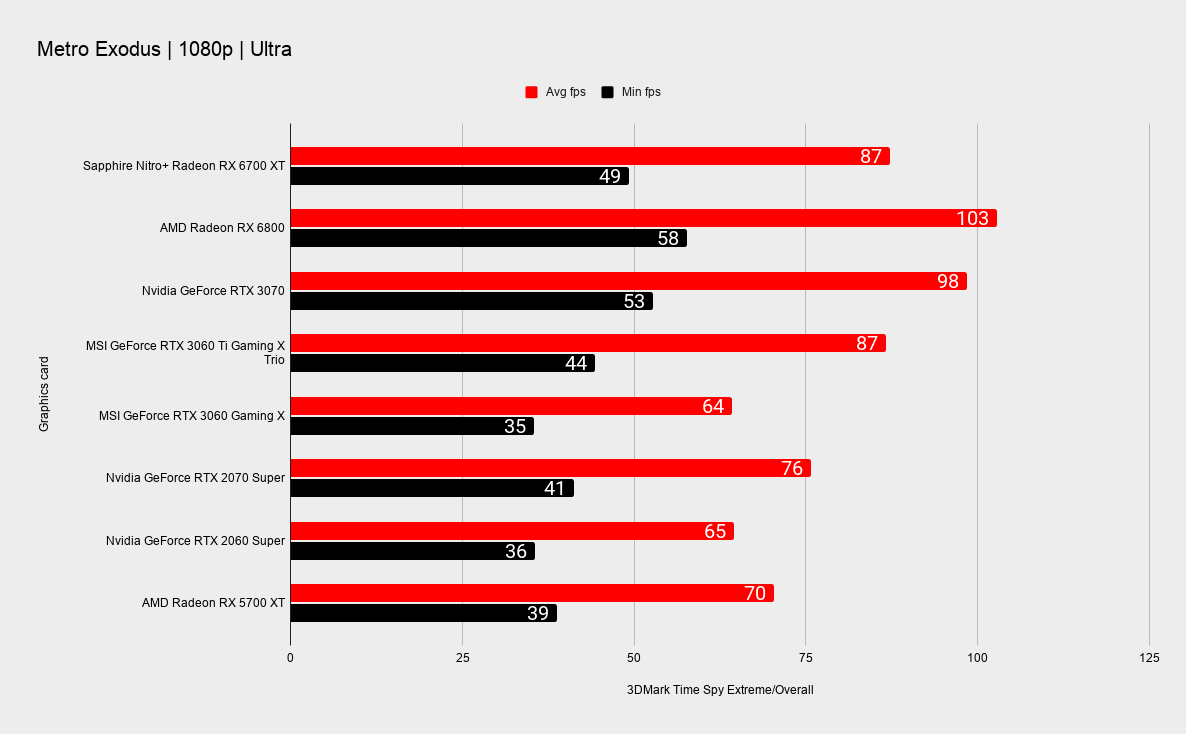
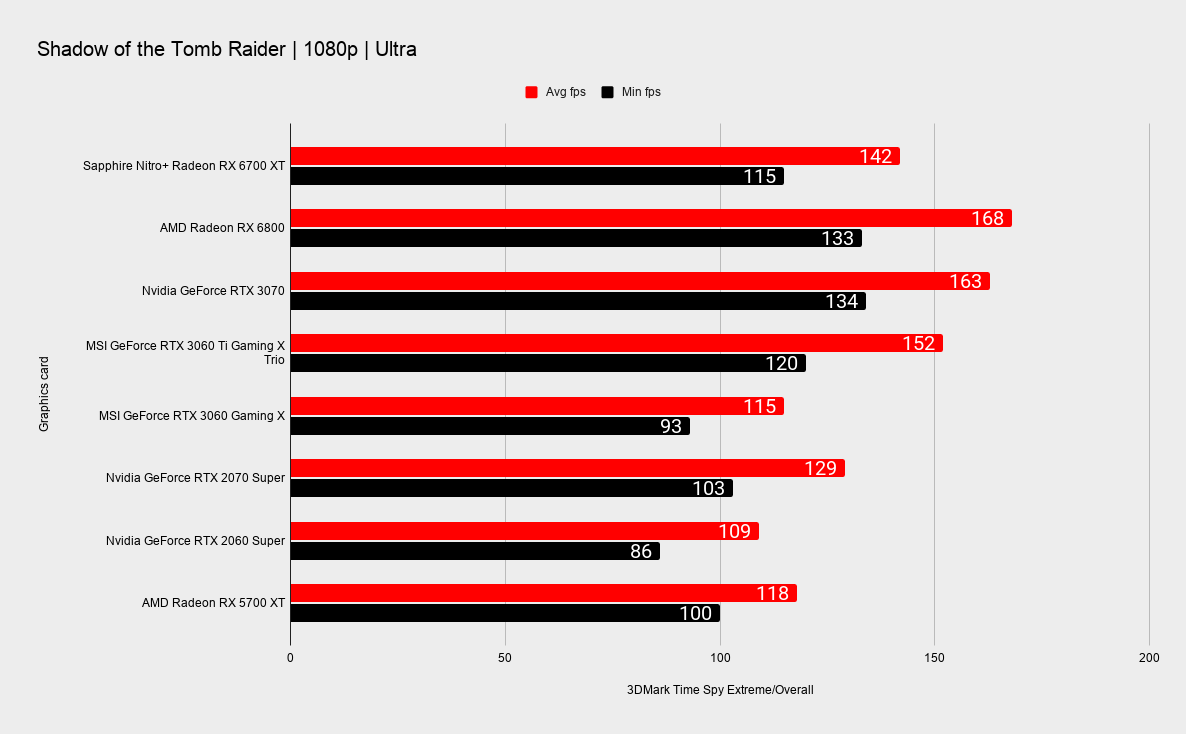
It will, however, ply whatever game at 1440p and bash out the frames at 1080p when drive a high refresh plac monitor. The Nitro+ RX 6700 XT , and all other RX 6700 XT cards for that matter slowdown noticeably in radiate tracing functioning and we'll have to wait a little longer to see AMD's equivalent DLSS implementation.
1440p play execution
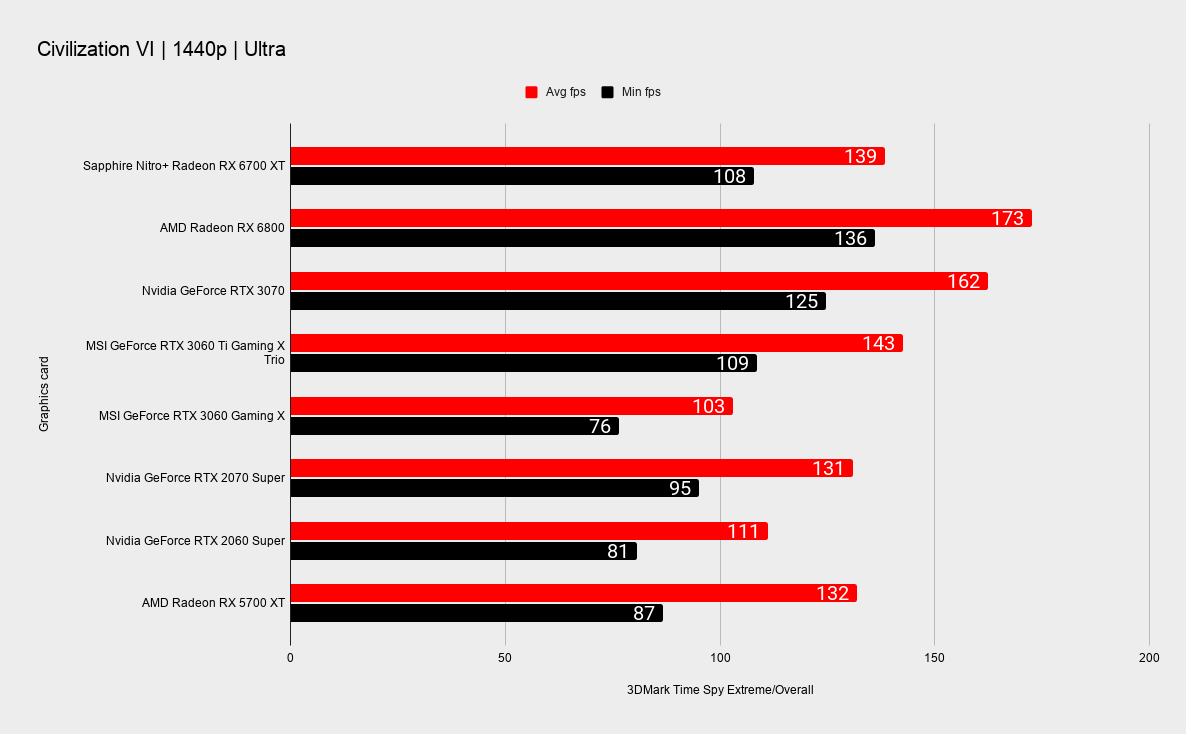
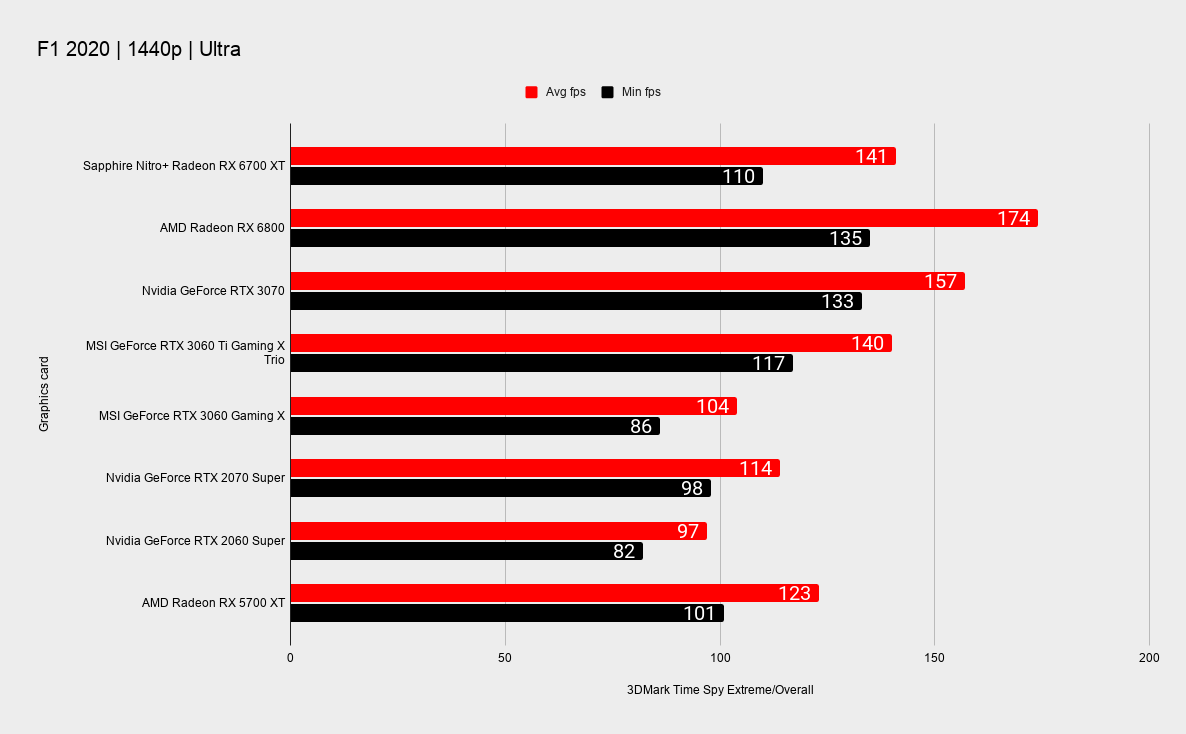
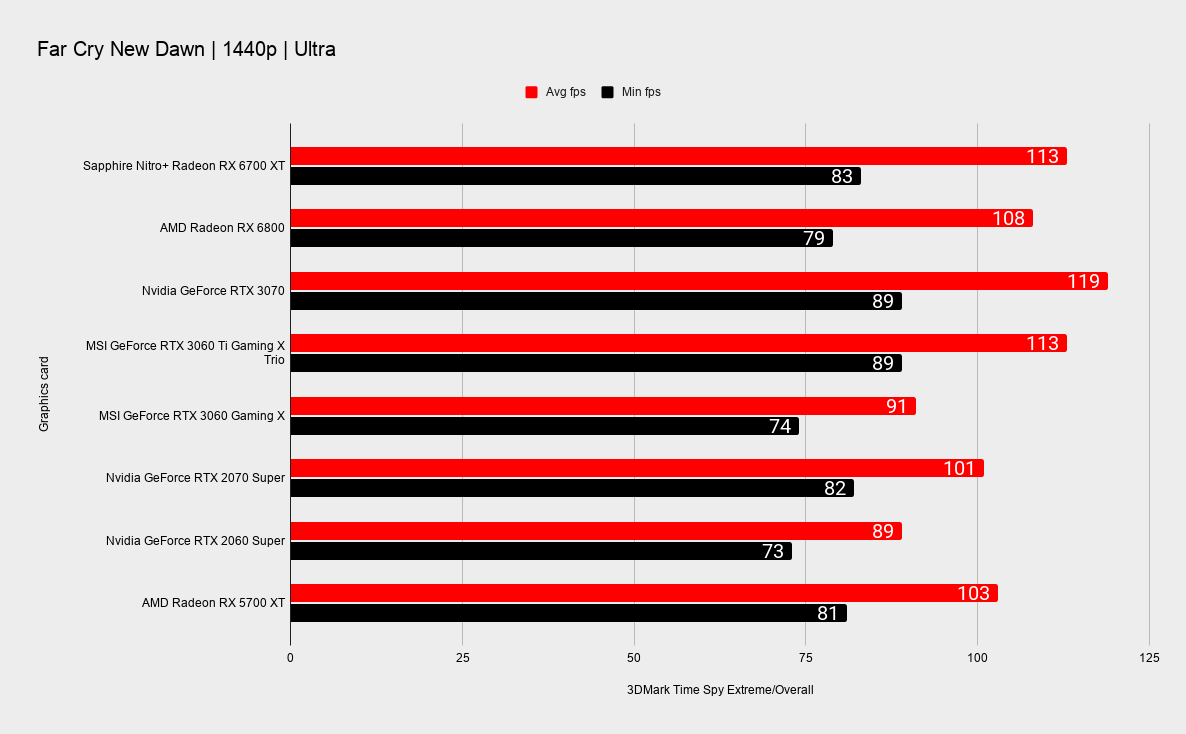
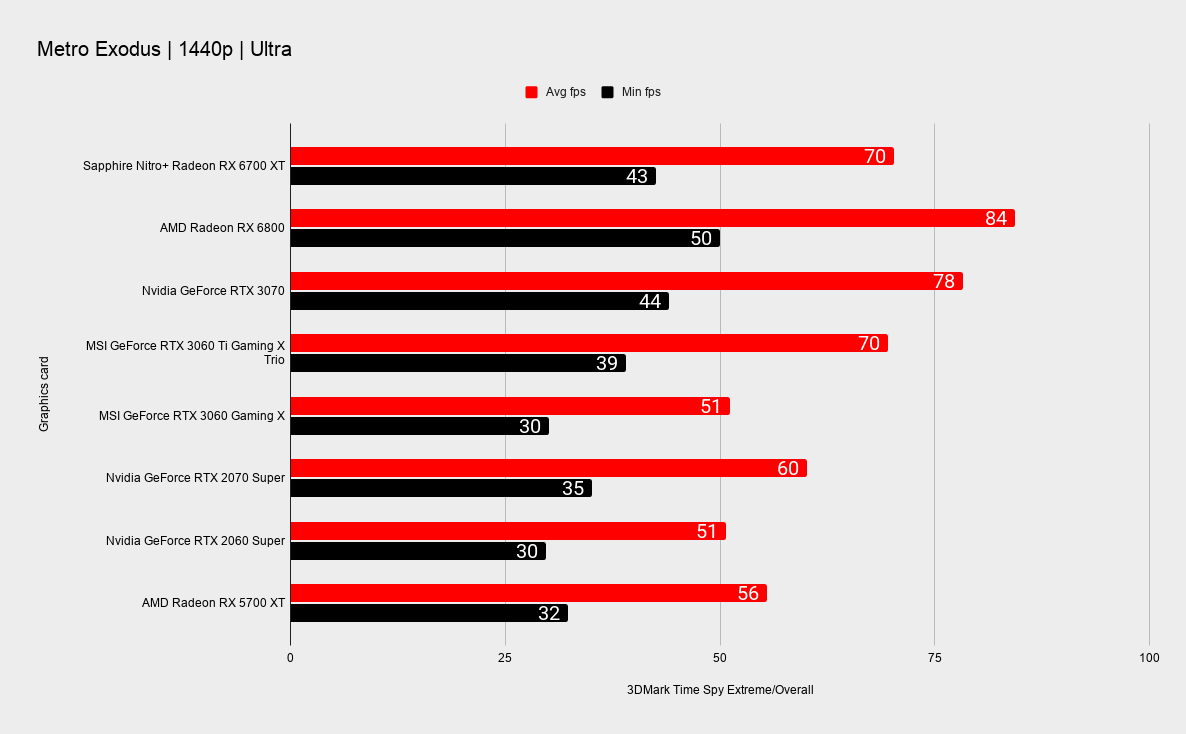

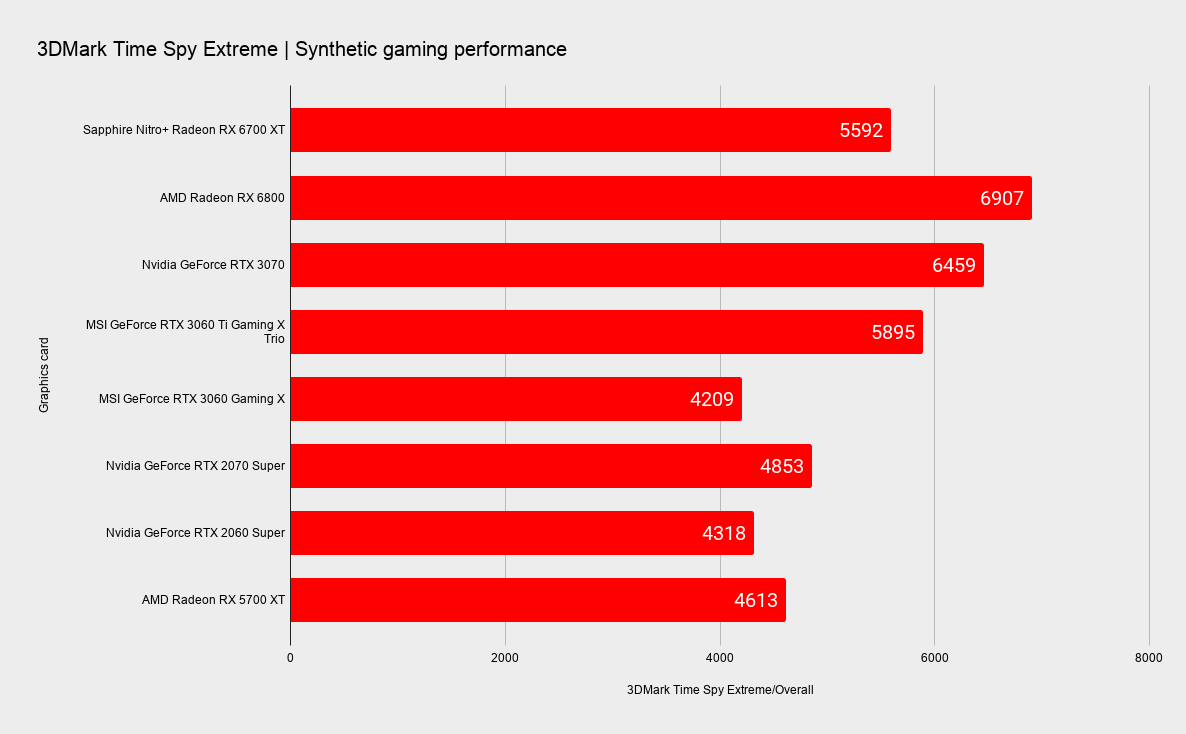
Temperature reduction performance
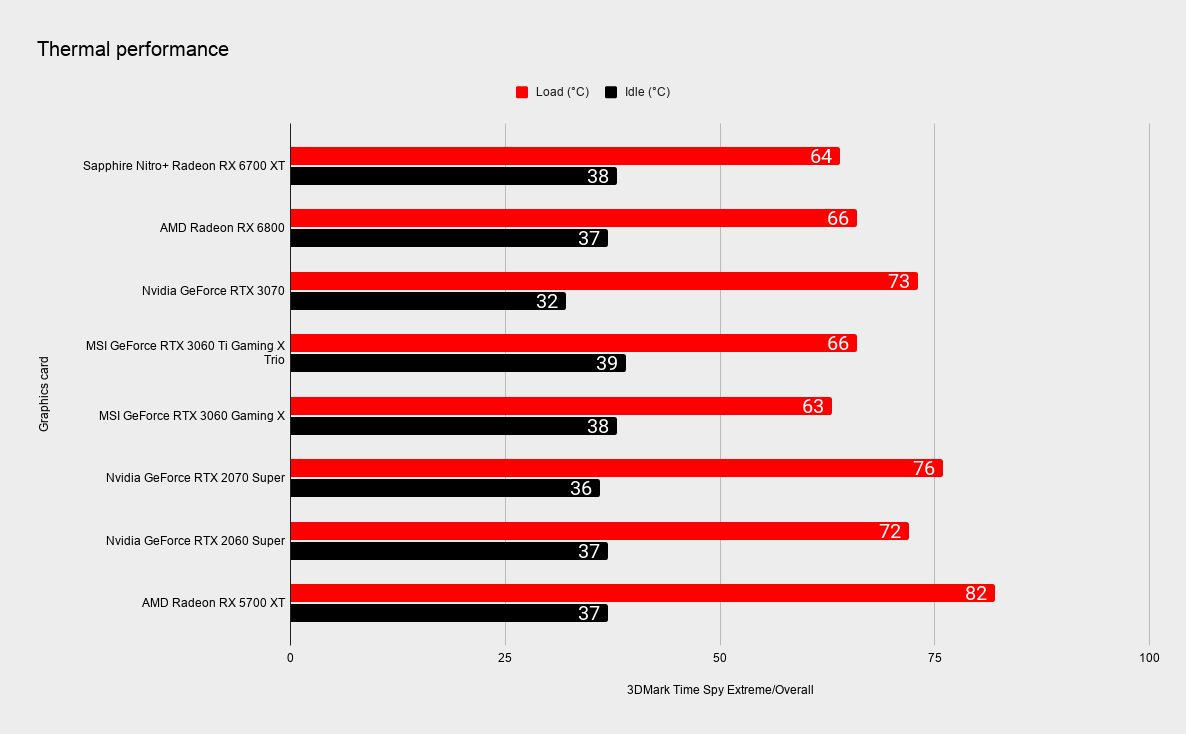
When every is said and through with, though, sadly your choice of card will in reality follow down to what's in stock the particular second you happen to refresh your favourite retailer's page. A bring home the bacon away a frame here or a frame in that location doesn't matter if you give the sack't buy one over the other.
Overclocking modern GPUs generally ISN't as beneficial as it was in the past, just free people performance is absolve, and then wherefore non give information technology a go?
Our testing was simple. The power limit was multiplied to its maximum +15% and the retention to its frustratingly limited maximum of 2,150MHz from the default 2,000MHz. Our sample was happy to run at a sic clock of 2,850MHz, with a real average clock of 2,765MHz observed over a 10-minute 3DMark loop.
Real carrying into action was deliberate using Metro: Exodus at 1440p. The default on clocked Nitro+ delivered 70.3 FPS compared to the overclocked placard which ran at 74.6 FPS. That's not an insignificant gain, but not a game changer either.
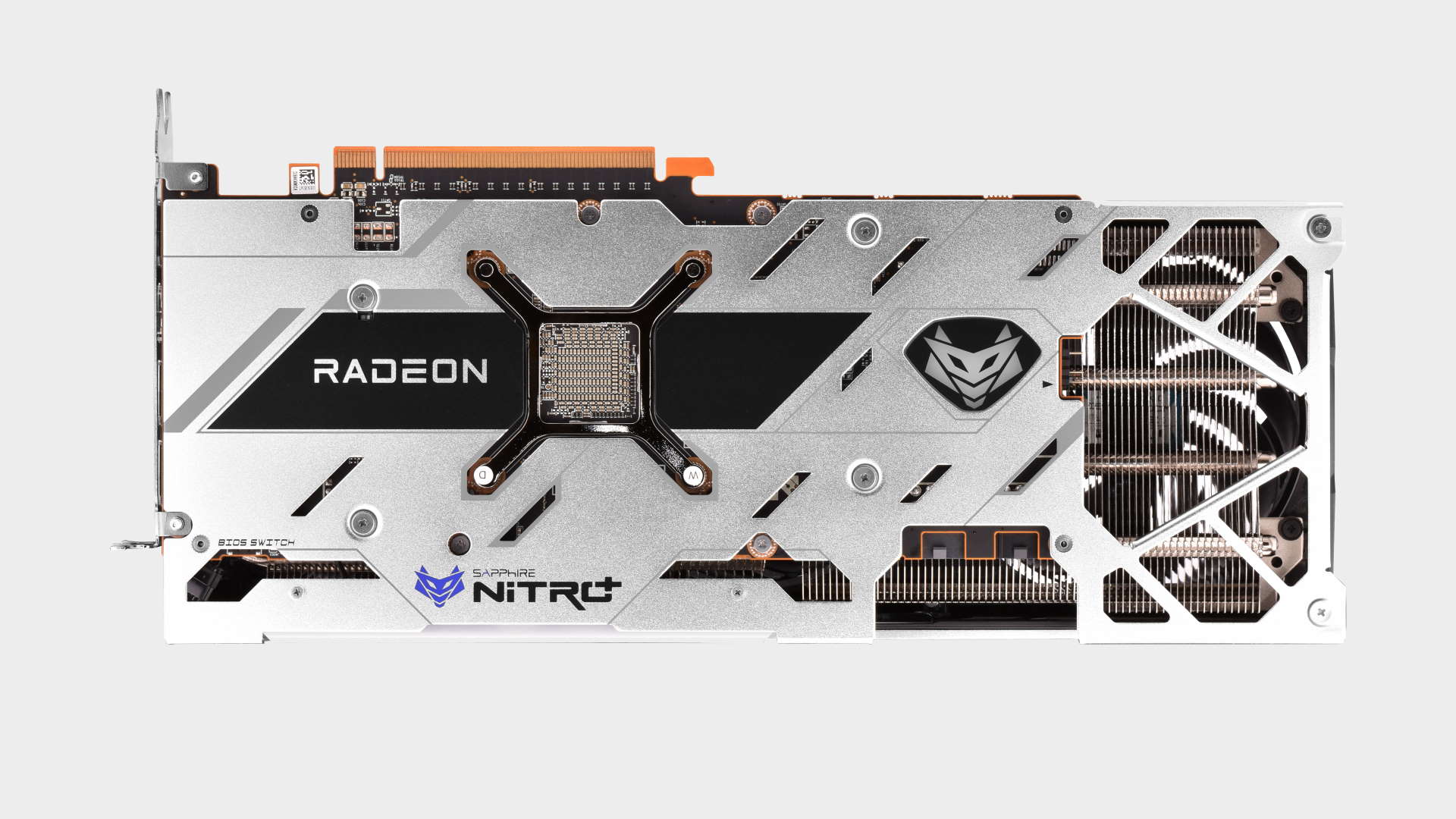
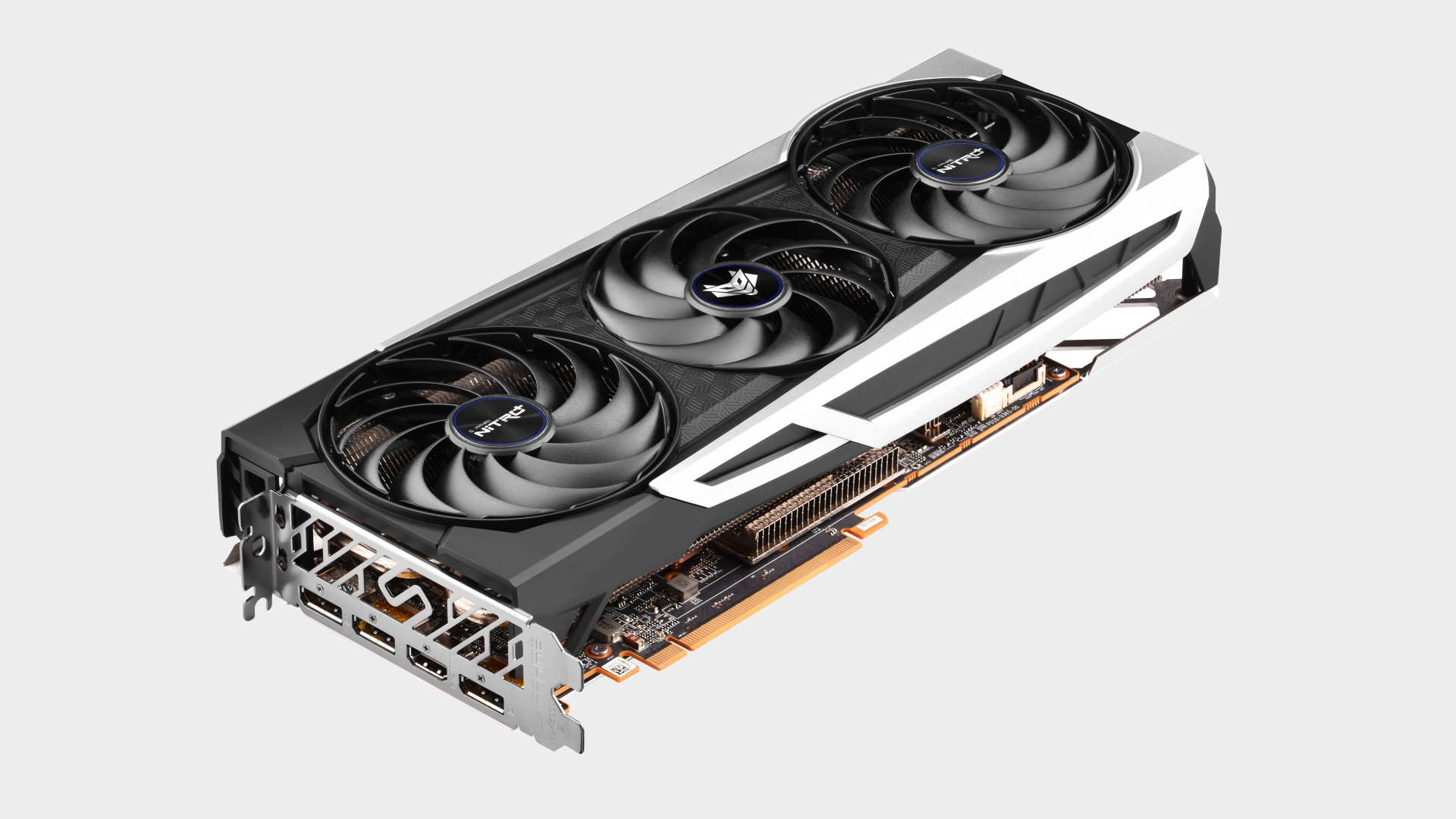
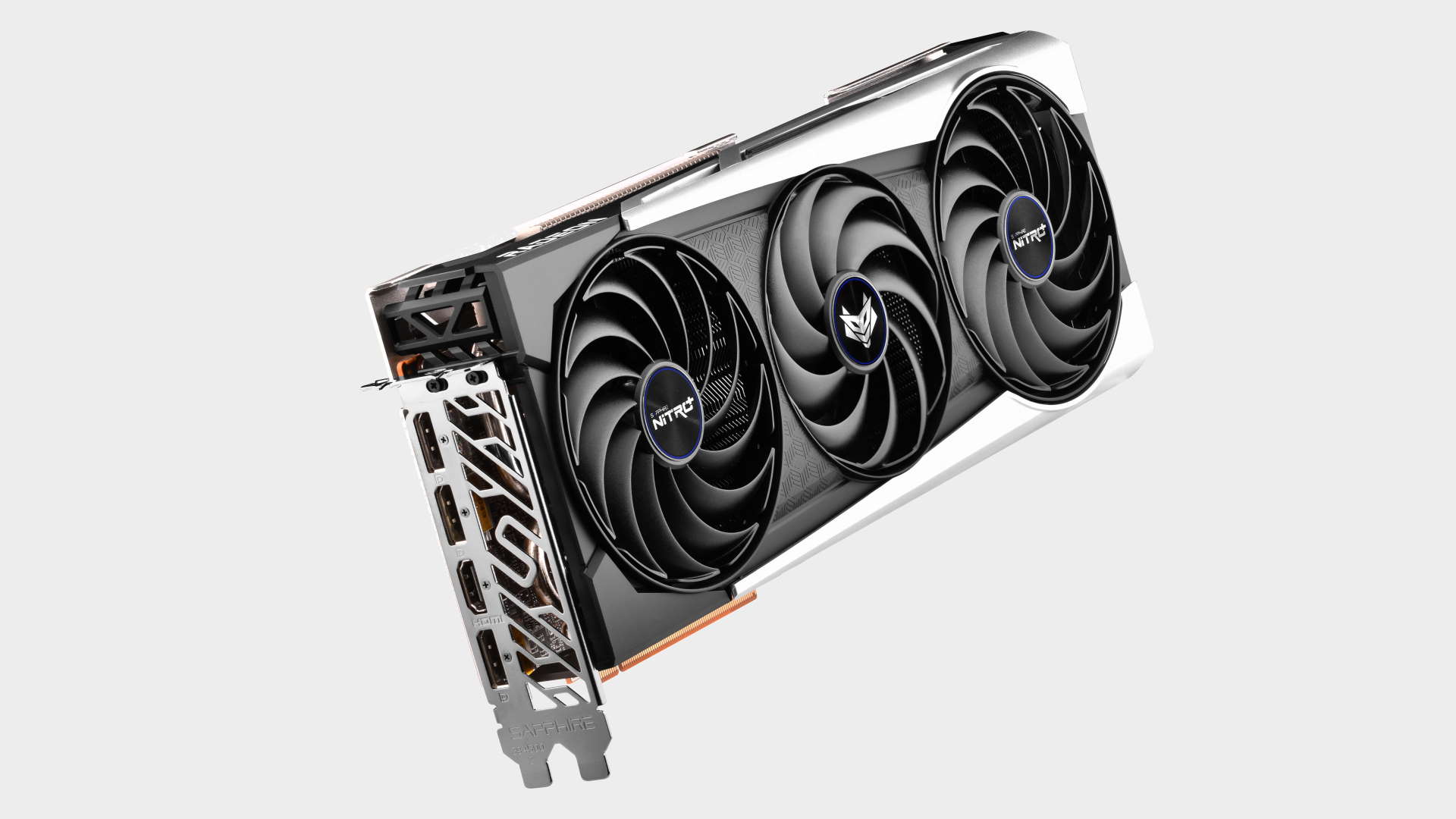
The Sapphire runs air-conditioned and quiet, it has 12GB of storage, dual BIOS, a robust PCB and lashes of RGB lighting. IT's a extremely equal to 1440p card and it competes well with the RTX 3060 Ti, but its main problem is its pricing, even if you were lucky enough to find one at MSRP.
If it was priced closer to the GeForce RTX 3060 it would be a fair winner in the upper mid-range segment. But at a base $579 USD (and good luck finding one at that terms), information technology loses a pile of its shine. The Nitro+ and, for the most part, wholly strange Radeon RX 6700 XT, are actually great little graphics cards as long as you put on't weight RT and super resolving power tech that extremely.
The Nitro+ itself is alright-built card, but at these prices it's a unmanageable deal against the strong RTX 3060 Si. Let's assure how the market matures in the coming months. The Nitro+ may yet become the persuasive mid-range gaming GPU we think it can constitute, but it's departure to need a price cut.
Sapphire Nitro+ Radeon RX 6700 XT
The Sapphire 6700 XT Nitro+ is potentially a mid-mountain chain champion, but not at these prices.
Source: https://www.pcgamer.com/sapphire-nitro-plus-radeon-rx-6700-xt-review-benchmarks/
Posted by: rossiprinfordied.blogspot.com



0 Response to "Sapphire Nitro+ Radeon RX 6700 XT Review | PC Gamer - rossiprinfordied"
Post a Comment